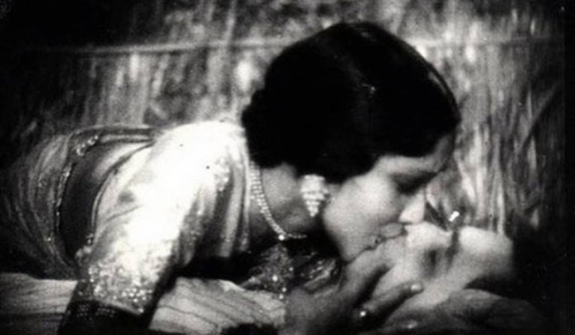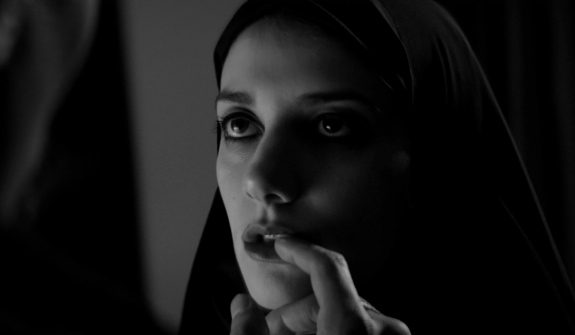
In diasporas across Canada, the U.S., Britain and beyond, Bollywood films have become crucial context for the inherited identities of generations of movie fans of Indian descent. My parents, also born in the diaspora – in East Africa – used Indian cinema as a way to maintain a link to a place that was only home in ephemeral, inherited memory. As a kid, I vacillated between hating and loving these films. I was instinctively, practically biologically, drawn to the language, the clothing, the brown skin — but it also made stark the here-there tension of migrant identity. As I grew older and as Hindi-language cinema dug roots into the global film industry to become something of a Mecca for aspiring celebrities around the world, I found pride in its economic, and especially aesthetic, influence.
Growing up, my parents would pile me and my younger brother into the car, luring us with promises of popcorn, hot samosas, and orange soda. The four of us would make the 20-minute drive from our home in north Brampton toward the suburban Toronto neighbourhood of Rexdale to take in the latest Bollywood release at Albion Cinemas. It was a shabby theatre in a dingy strip mall — this was before local megaplexes began screening foreign language films in an attempt to woo immigrant audiences. My earliest form of film criticism took up the mantle of scrutinizing movies like Darr (1993), a psychological thriller about an obsessive boyfriend starring India’s top actor, Shah Rukh Khan, the ensemble comedy Andaz Apna Apna (1994) and 1942: A Love Story (1994), led by the famed and moustachioed Anil Kapoor.
My pre-teen frame of reference was shaped by the succinct and comparably logical Hollywood films I’d watch on movie dates with my friends, or at home on TV. More specifically, I loathed Bollywood films almost exclusively because of their camp. Everything was feel-good. The conclusions too neat, despite the messy plotlines. I found the song-and-dance numbers (featuring rows of sequinned backup dancers) to be gauche, the violence terrifyingly glib, the hyperbolic romance hypocritical in the face of Indian cultural conservatism, and the three-hour run times entirely exhausting to endure.
Bollywood, which is centered in the port city of Mumbai and primarily serves Hindi and English-speaking audiences, is a multi-billion dollar enterprise. Given India’s linguistic and cultural diversity, it doesn’t represent a totality of the country’s cinema. There are independents (2012’s five-hour crime family epic, Gangs of Wasseypur), art house features designed for foreign audiences (1996’s lesbian love story Fire by Canadian director Deepa Mehta), and limited screens (2012’s Miss Lovely, about Mumbai’s C-grade smut film industry) — these offshoots are places to tell outlier stories dealing with more complex, and sometimes taboo, ideas. There are also other mainstream cinema scenes like Tollywood, which generate Telugu-language films, and the Tamil-centric Kollywood, among others. But Bollywood is the largest national filmic export (Nigerians are said to be ardent fans), and is understood to be a glimmering hub for aspiring actors and actresses of Indian origin from all over the world. It has become international shorthand for modern Indian culture. It has its own awards shows, fuels the peripheral careers of stylists, designers, dancers and musicians, and commands an almost monarchical order of celebrity. In India, which has been tenuously divided along religious lines since the British era, Bollywood might be considered a shared faith. Abroad, it is how Non-Resident Indians (NRIs) maintain a link to home. For many Desis, Bollywood is life.
How do you identify a Bollywood film? Whether it’s a generational or interfaith saga set in the Partition era, a melodrama about star-crossed lovers, a tale of brawny entanglements and love triangles, a gangster flick, or a gag-filled romp, Bollywood’s mise-en-scène is permanently fixed on camp’s excess. It’s in the aesthetic: sudsy dialogue, elaborate plot lines, tight shots on half-parted lips glossed in frosty pink, or bushy eyebrows trembling with anger, laborious deaths, wailing mothers, and song-and-dance routines that spuriously transport a flirting couple from the bustling streets of Mumbai to a picturesque Swiss village or British countryside.
And Bollywood’s camp is also something of a performance method. The true command of a Hindi cinema actor is made explicit in his or her ability to immerse themselves in cliché: men, now more than ever, are muscular and id-driven, or soft-eyed and gentlemanly; women are pious and beautiful, or sexy yet tameable. Everyone can dance or lip-sync, maybe both. Nearly everyone, though this is changing, has a fairer complexion than the average Indian citizen. There is little space for men (and even less for women) who don’t fit the mould: comedic actor Johnny Lever, short and dark-skinned, has sustained a career from the ‘80s through today playing a manic jester. The actor Nawazuddin Siddiqui, also darker-skinned with a smouldering aura similar to Chiwetel Ejiofor, is being hailed as a sign of Bollywood’s progressiveness: the “unlikely” leading man who persevered past the industry’s nepotistic gatekeepers and wound up on the cover of GQ India.
Despite these changes, it is the glittery costumes, the writhing dancers, the sparrow voiced ‘playback singers,’ and the sexed-up stars that truly represent an evolution of the genre, which experienced its golden age in the post-Independence period, through to the mid-’60s. Then, films were mostly social dramas, and served as examinations of rural life and of post-Partition anxieties. The introduction of pulpier themes coincided with globalization and an increasing Western influence, and perhaps this is what I found embarrassing when watching Bollywood films: it felt like they lacked complexity or self-awareness, and the fawning, awkward co-opting of the worst of Hollywood tropes was irksome.
But in recent years, Bollywood has begun to look inward instead of outward to explore the changes wrought by globalization. 3 Idiots is an award winning, new-classic released in 2009 about three precocious college-aged guys exploring individualism in a society engineered toward collectivism and the family. Here, as in most Bollywood films, music is used to break the tension. 2010’s Do Dooni Chaar, distributed by Disney World Cinema, is a family comedy (in the vein of Hollywood dad-camp classics, Daddy Daycare [2003], or Are We There Yet? [2005]) about a newly-middle-class family of four who decide to act on their dream of buying a car. It’s a concept that seems fairly outlandish in a Western context, but the conundrums of disposable income and tensions between parents and their digital, millennial kids had just begun to emerge around the time of the film’s production.
And Bollywood camp is revolutionary too. As pure aesthetic, it has helped define and commodify Hindi films both within and outside the country. That poses some problems: Bollywood has a monopoly over the country’s tastes leaving little room for independent cinema to do well on domestic screens. It also fuels western, Orientalist ideas of a homogenous India seen in international works like Bollywood/Hollywood (2002), Slumdog Millionaire (2008) and recent music videos by pop stars like Iggy Azalea and Selena Gomez. But as an aesthetic device, camp has allowed the film industry to broach difficult or compelling new ideas in a socially conservative — or “protectionist” — environment. In some ways, it’s sort of a catalyst of social change. For decades, romantic movies would break sexual tension with titillating dance scenes, wet saris and shirtless alpha leads – but these films would almost never end in a kiss. After IRL couple Devika Rani and Himanshu Rai kissed in 1933’s Karma, Bollywood regressed into decades of suggestive embraces and creative angles before Raja Hindustani (1996) took the plunge with a steamy make-out between actors Karisma Kapoor and Aamir Khan set in the rain amidst string flourishes and a sighing choir.

For native Indian audiences, as well as for the diaspora, Bollywood camp is a salve. Partition narratives and films that deal with the consequences of communal violence (such as 1993’s Bombay, or Qissa from 2014) ostensibly serve to quell religious tensions that remain pervasive throughout the country – and amongst some NRI communities – today. So campy, feel-good films are an escape, but they are also more than that. The film industry itself is remarkably progressive in continuing to push interfaith plotlines, scores, and casting on its audiences.
In Desi communities around the world, camp is what differentiates Bollywood from Hollywood or other international film scenes, which means it provides a flash point of connection to a mythic homeland. For children of immigrants like myself, it creates a cultural and linguistic bridge that can be meaningful when struggling with the tension of growing up between identities. And despite the imposition of western beauty ideals, it is affirming to watch (and crush on!) women and men who look like you or people you know on-screen. Similar to how some circles of gay West Indians have aggressively recouped homophobic dancehall music, staking a claim to notoriously straight Bollywood is an appropriative act for queer Desis. London’s Club Kali is a drag night and safe space for gay men, particularly gay Muslim men, to claim and occupy their brown-ness and their queerness. Parties like Toronto’s long-running Besharam series and NYC’s Basement Bhangra – both founded by women – are spaces for diasporic brown kids to explore and reconcile elements of competing identities through music and dance.
It took a long time before I let my guard down and embraced the camp and kitsch of Bollywood because I didn’t want to be associated with nonsensical, chaste confection. But understanding camp as a function of a Bollywood that is rapidly changing helped unlock its potential in both a domestic and international context. I still cringe whenever Bollywood is used as shorthand for Indian music, dance, or clothing, but it’s done more good for Desis at home and abroad than anything else I can name– and, unlike mainstream yoga culture, it centers brown people. I’d say that’s something to sing and dance about.





